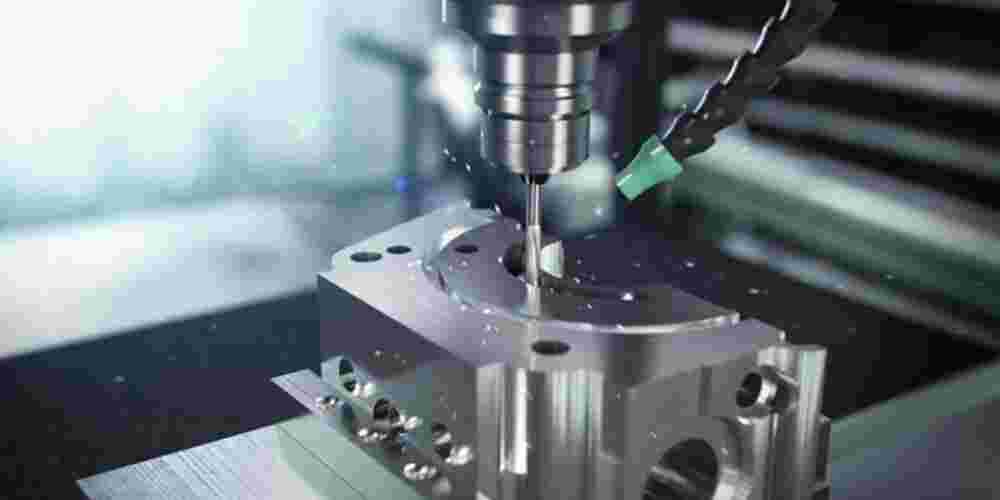Algorithmic Approaches to CNC Toolpath Planning: Optimizing Precision in Construction and Building

In today’s construction and building industries, Computer Numerical Control (CNC) machining plays a pivotal role in producing components with precision and efficiency. From custom architectural panels to structural elements, CNC machines are enabling companies to deliver high-quality results faster. At the heart of CNC machining lies toolpath planning—the algorithmic process of determining the exact route a cutting tool takes. Well-designed toolpaths reduce waste, improve accuracy, and save time, making them vital for both productivity and cost-effectiveness.
The Importance of Toolpath Planning in Construction
In construction and building applications, CNC machining is often used for cutting wood, metals, composites, and even concrete-based materials. Poorly planned toolpaths can lead to:
- Increased material waste from unnecessary passes
- Excessive tool wear, raising replacement costs
- Longer production times, delaying projects
Algorithmic toolpath planning addresses these challenges by applying data-driven approaches to generate efficient cutting strategies. For businesses in the building sector, this means greater reliability, lower costs, and the ability to deliver complex designs with confidence.
Algorithmic Approaches: Key Techniques
1. Zigzag and Contour Strategies
Traditional algorithms often rely on zigzag or contour-based strategies.
Zigzag toolpaths are efficient for large flat surfaces, reducing machining time.
Contour-based paths follow the shape of the part, ideal for curved or intricate components often found in architectural design.
Choosing between these approaches depends on material type and design complexity.
2. Adaptive Clearing Algorithms
Adaptive clearing uses algorithms that maintain consistent tool engagement with the material. This technique prevents tool overload, reduces heat buildup, and improves tool life. For construction materials such as steel beams or hardwood panels, adaptive clearing provides both speed and precision.
3. Optimization via Computational Geometry
Modern algorithms incorporate computational geometry to optimize tool movement. By calculating the shortest and most effective paths, these approaches minimize non-cutting travel time. This is particularly beneficial in large-scale projects where every second on the machine impacts the overall construction schedule.
4. AI-Driven and Machine Learning Methods
Recent advances integrate artificial intelligence (AI) and machine learning into toolpath planning. These algorithms analyze past performance data and automatically adjust strategies for future jobs. In the building industry, where material variability is common, AI-driven planning offers adaptive solutions for consistency and quality.
Practical Benefits for Construction and Building
Implementing algorithmic toolpath planning translates directly into measurable outcomes:
- Reduced project costs through material efficiency
- Shorter lead times for prefabricated building components
- Higher quality finishes that meet architectural standards
Extended equipment lifespan due to optimized cutting strategies
By leveraging these methods, construction firms can align precision machining with the rigorous demands of modern projects.
Case Example: Prefabrication and Modular Building
The rise of prefabrication and modular construction highlights the value of algorithmic planning. CNC machines, guided by optimized toolpaths, can produce wall panels, flooring systems, and decorative facades with exact tolerances. The result is faster assembly on-site, reduced errors, and enhanced scalability for large projects.
Looking Ahead: The Future of Toolpath Planning
As CNC technologies evolve, so will the algorithms that drive them. We can expect:
More integration with BIM (Building Information Modeling) for seamless design-to-production workflows
Cloud-based optimization allowing multiple machines to share toolpath strategies in real time
Sustainable machining approaches focused on reducing material waste and energy use
For construction professionals, staying ahead of these developments means remaining competitive in an industry where precision and efficiency are increasingly non-negotiable.
Conclusion
Algorithmic approaches to CNC toolpath planning are transforming the construction and building industries. By combining proven strategies like zigzag and contour methods with advanced solutions such as adaptive clearing and AI-driven optimization, professionals can achieve higher efficiency, precision, and sustainability. For companies baut seeking to differentiate themselves in today’s competitive market, embracing these technologies is not just beneficial—it’s essential.
- Art
- Causes
- Crafts
- Dance
- Drinks
- Film
- Fitness
- Food
- Jeux
- Gardening
- Health
- Domicile
- Literature
- Music
- Networking
- Autre
- Party
- Religion
- Shopping
- Sports
- Theater
- Wellness



